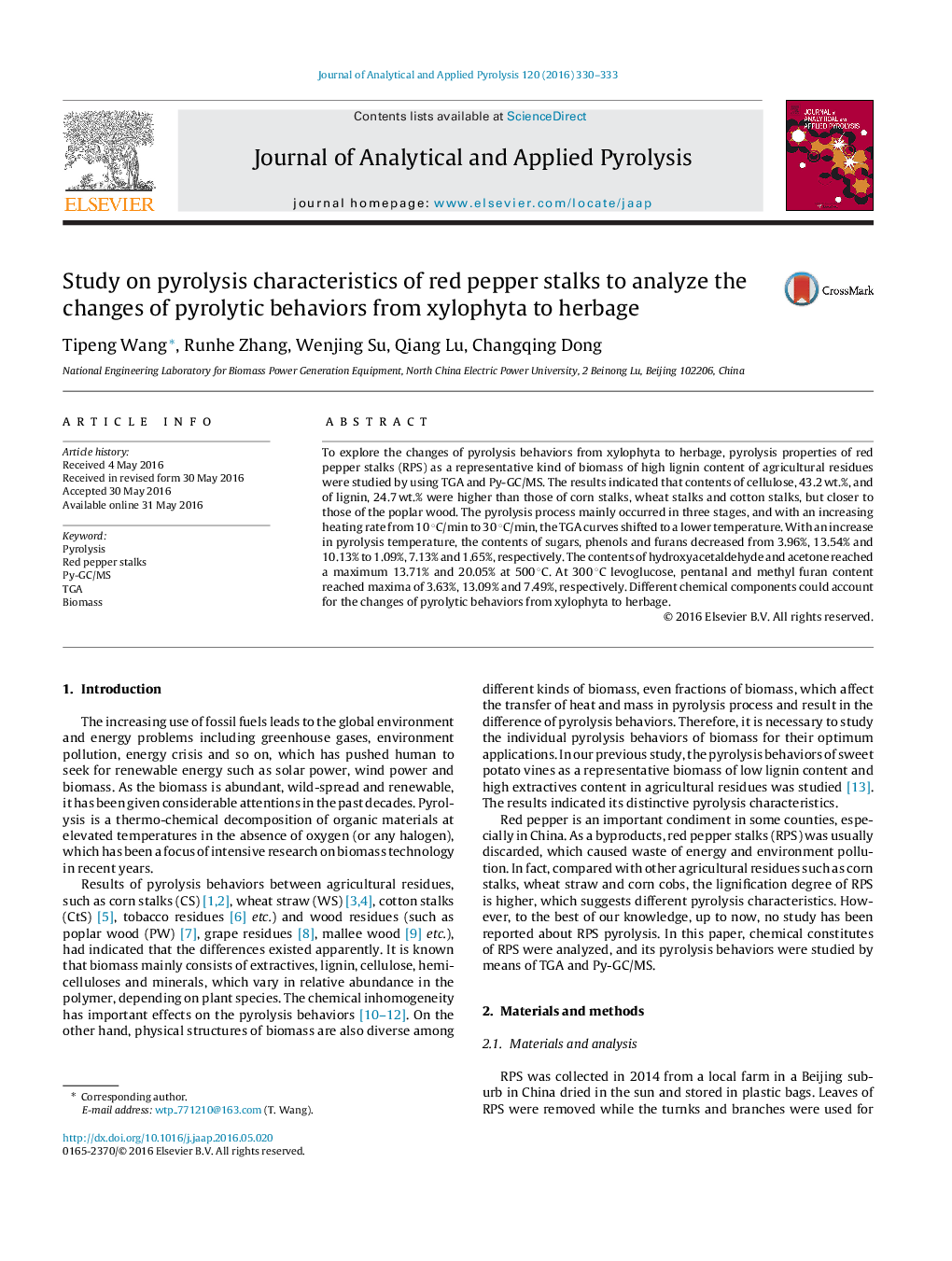| Article ID | Journal | Published Year | Pages | File Type |
|---|---|---|---|---|
| 1196558 | Journal of Analytical and Applied Pyrolysis | 2016 | 4 Pages |
•Chemical compositions of RPS was closer the wood rather than other agricultural residues.•The pyrolysis processes mainly occurred in three stages, and with an increasing of heating rates, the TG curves shifted to lower temperature.•Low pyrolysis temperature (for example 300 °C) enhanced the pyrolysis selectivity to levoglucose and methyl furan in bio-oil.•High reaction temperature (for example 500 °C) improved the formation of HAA, pentanal and acetone in bio-oil.
To explore the changes of pyrolysis behaviors from xylophyta to herbage, pyrolysis properties of red pepper stalks (RPS) as a representative kind of biomass of high lignin content of agricultural residues were studied by using TGA and Py-GC/MS. The results indicated that contents of cellulose, 43.2 wt.%, and of lignin, 24.7 wt.% were higher than those of corn stalks, wheat stalks and cotton stalks, but closer to those of the poplar wood. The pyrolysis process mainly occurred in three stages, and with an increasing heating rate from 10 °C/min to 30 °C/min, the TGA curves shifted to a lower temperature. With an increase in pyrolysis temperature, the contents of sugars, phenols and furans decreased from 3.96%, 13.54% and 10.13% to 1.09%, 7.13% and 1.65%, respectively. The contents of hydroxyacetaldehyde and acetone reached a maximum 13.71% and 20.05% at 500 °C. At 300 °C levoglucose, pentanal and methyl furan content reached maxima of 3.63%, 13.09% and 7.49%, respectively. Different chemical components could account for the changes of pyrolytic behaviors from xylophyta to herbage.
